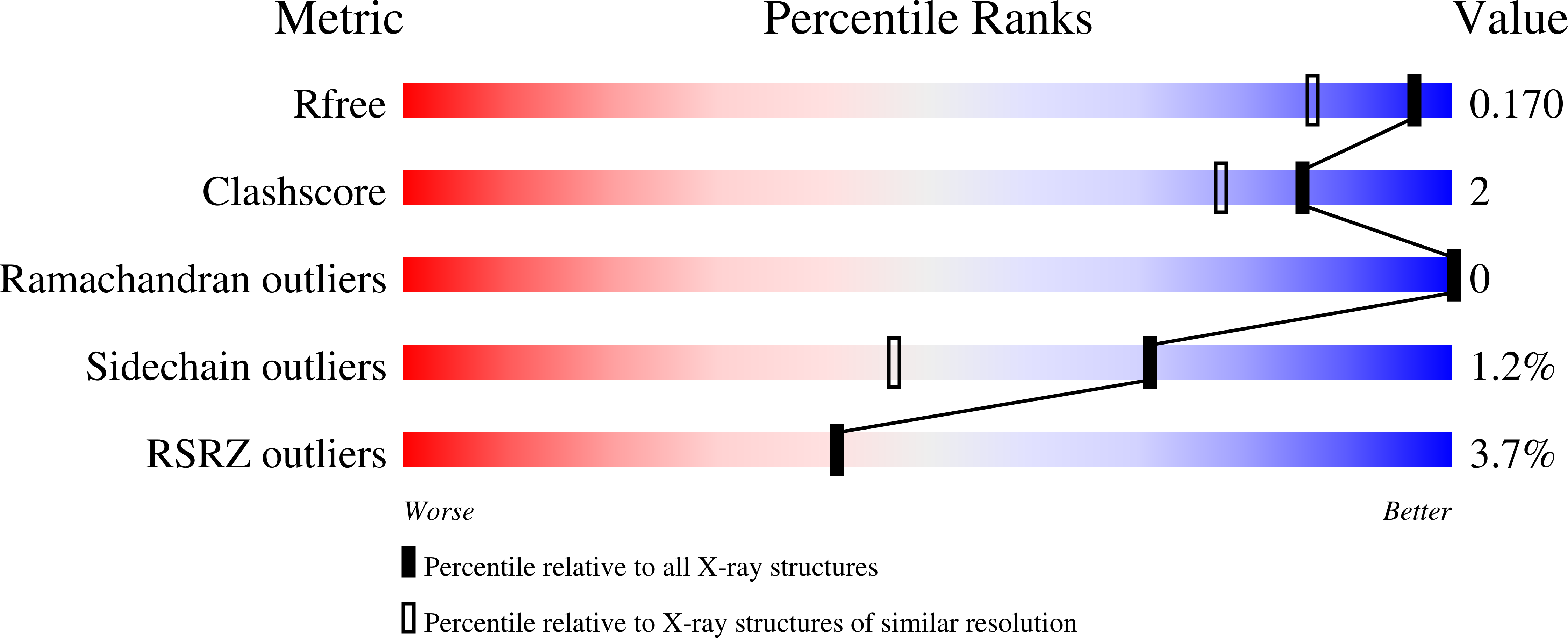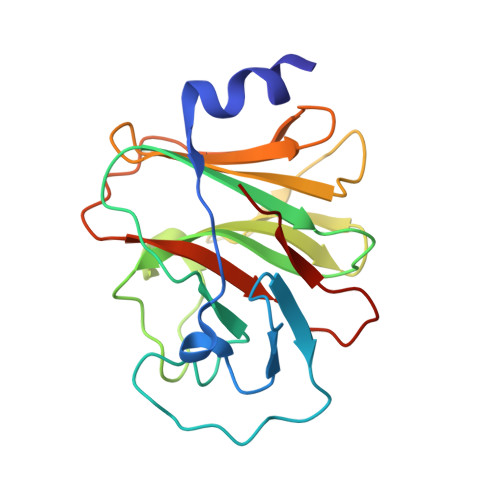The Intracellular B30.2 Domain of Butyrophilin 3A1 Binds Phosphoantigens to Mediate Activation of Human V gamma 9V delta 2 T Cells.
Sandstrom, A., Peigne, C.M., Leger, A., Crooks, J.E., Konczak, F., Gesnel, M.C., Breathnach, R., Bonneville, M., Scotet, E., Adams, E.J.(2014) Immunity 40: 490-500
- PubMed: 24703779
- DOI: https://doi.org/10.1016/j.immuni.2014.03.003
- Primary Citation of Related Structures:
4N7I, 4N7U - PubMed Abstract:
In humans, V¦Ã9V¦Ä2 T cells detect tumor cells and microbial infections, including Mycobacterium tuberculosis, through recognition of small pyrophosphate containing organic molecules known as phosphoantigens (pAgs). Key to pAg-mediated activation of V¦Ã9V¦Ä2 T cells is the butyrophilin 3A1 (BTN3A1) protein that contains an intracellular B30.2 domain critical to pAg reactivity. Here, we have demonstrated through structural, biophysical, and functional approaches that the intracellular B30.2 domain of BTN3A1 directly binds pAg through a positively charged surface pocket. Charge reversal of pocket residues abrogates binding and V¦Ã9V¦Ä2 T cell activation. We have also identified a gain-of-function mutation within this pocket that, when introduced into the B30.2 domain of the nonstimulatory BTN3A3 isoform, transfers pAg binding ability and V¦Ã9V¦Ä2 T cell activation. These studies demonstrate that internal sensing of changes in pAg metabolite concentrations by BTN3A1 molecules is a critical step in V¦Ã9V¦Ä2 T cell detection of infection and tumorigenesis.
Organizational Affiliation:
Department of Biochemistry and Molecular Biology, University of Chicago, Chicago, IL 60637, USA.




















